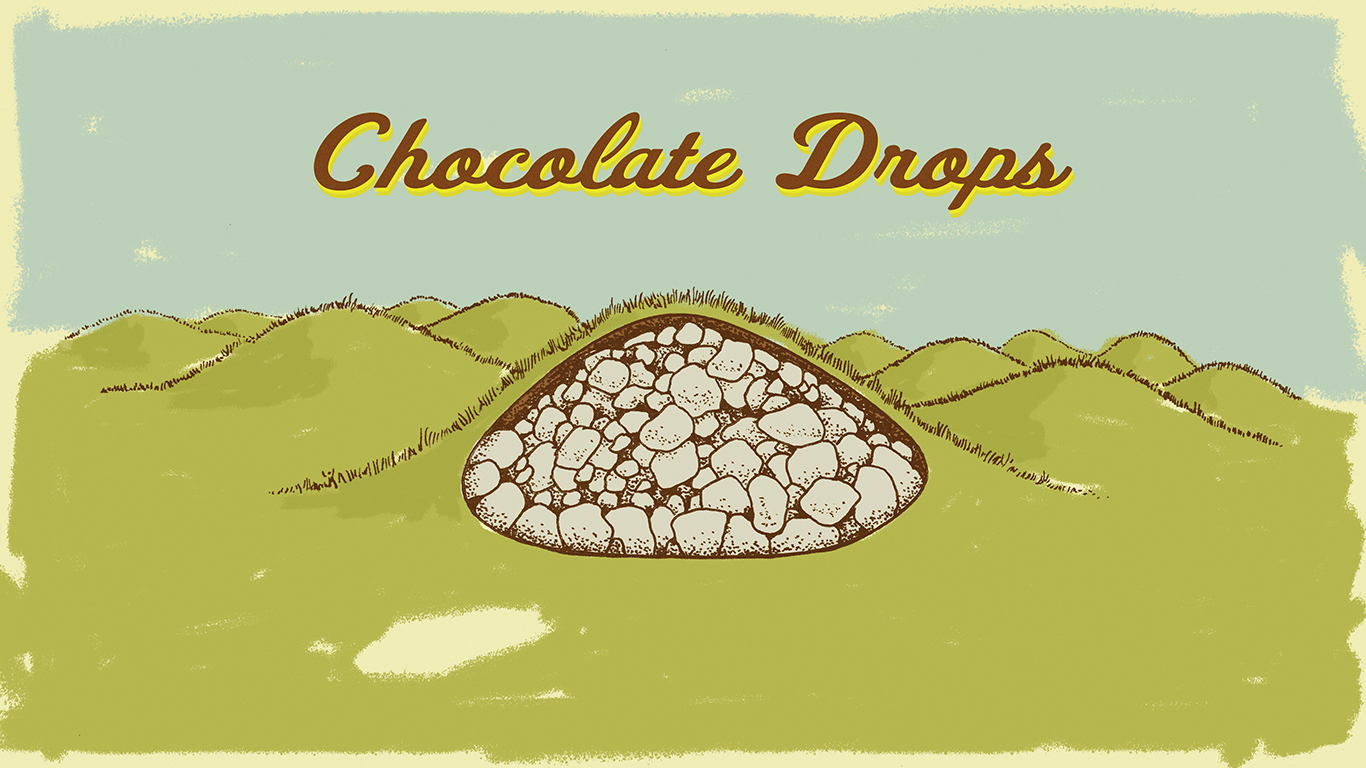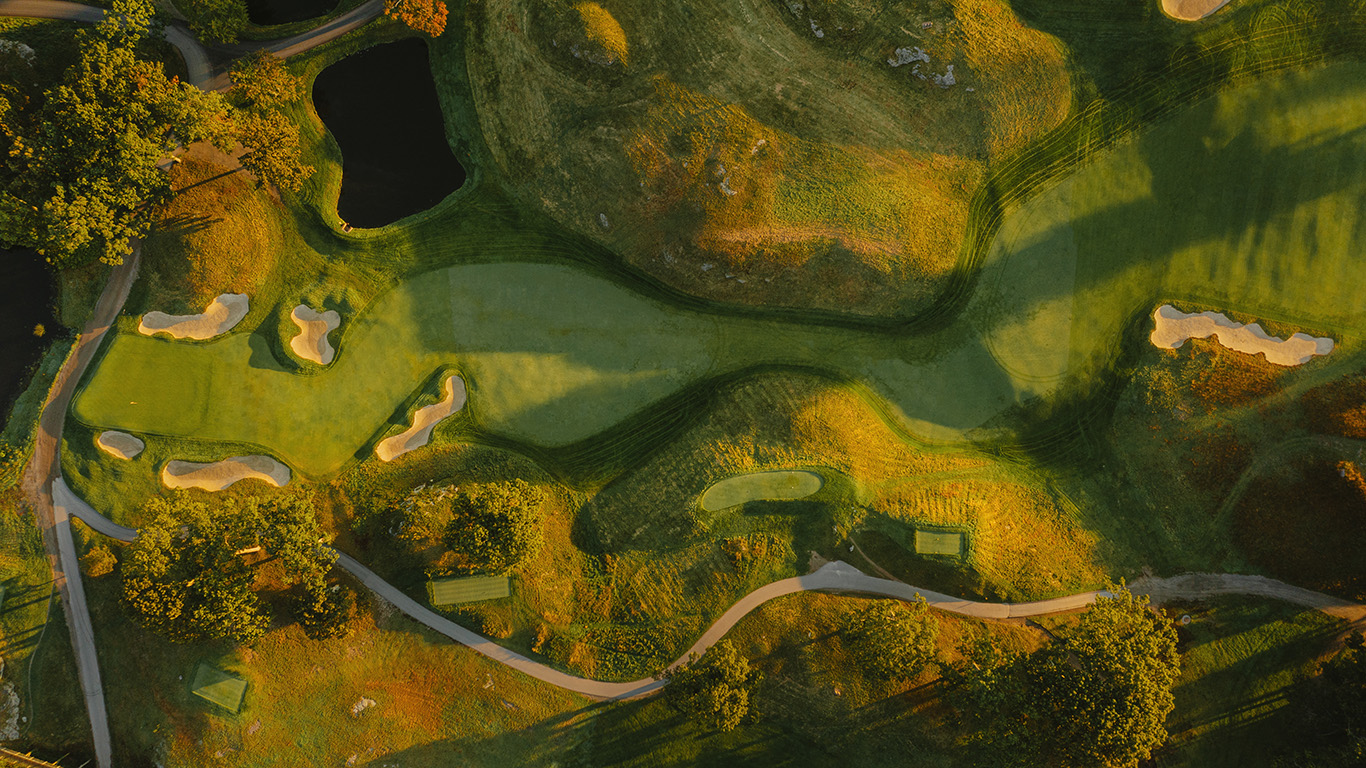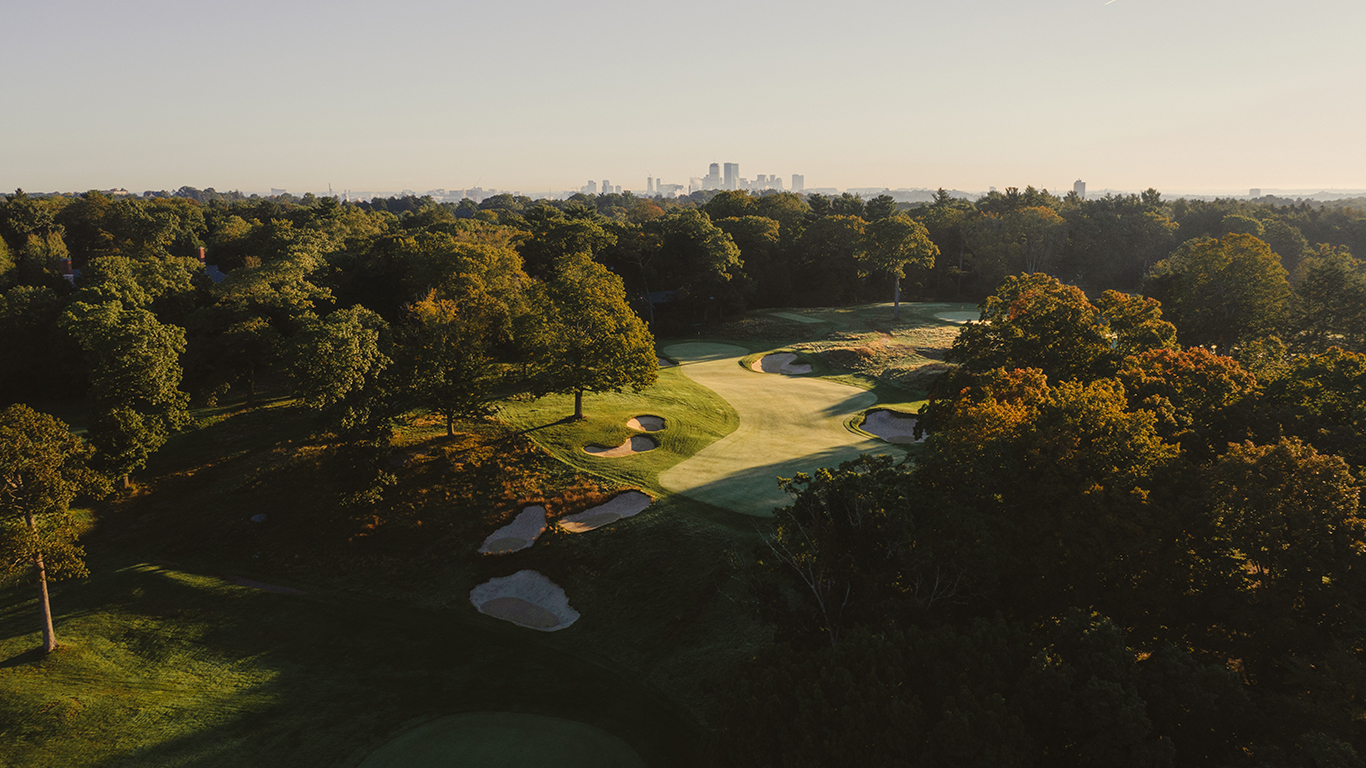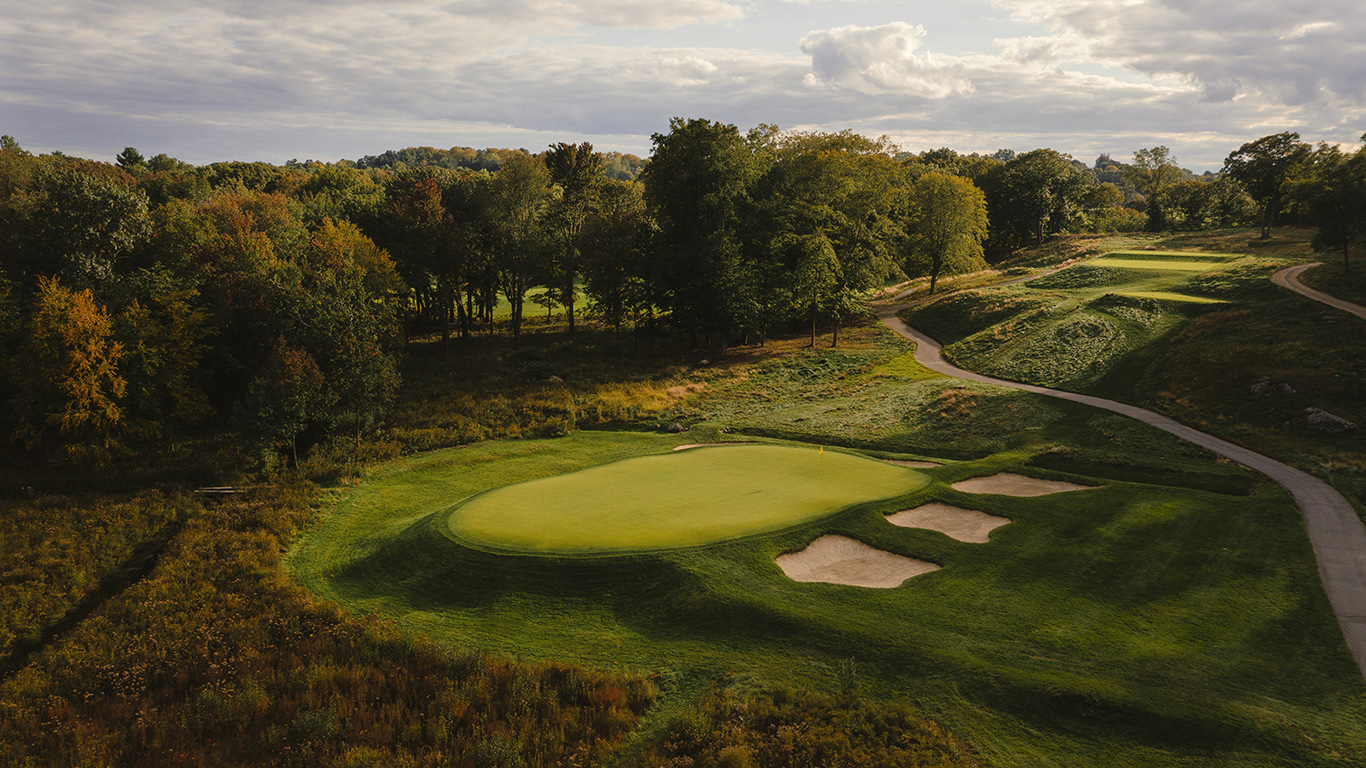Few golf courses in the United States have as deep and complex a history as this week’s U.S. Open venue, The Country Club in Brookline Massachusetts.
When the club was founded in 1882, it was focused on horseback riding, shooting, and general outdoor recreation. Golf arrived in 1893, when the Scottish professional Willie Campbell added a six-hole course on the rugged, rocky site. The game rose in popularity in the United States as the turn of the century approached, and the course grew to two nines, now called “Clyde” and “Squirrel.” The Clyde and Squirrel—or simply “Main”—course was updated by Alex “Nipper” Campbell, the gifted architect behind Moraine Country Club in Ohio, and by the early 20th century had basically taken on its final form. In 1927, William Flynn, of Shinnecock Hills fame, added the sporty nine-hole Primrose Course and made some tweaks to the bunker styling on the Main. The club’s modern championship routing consists of three holes from the Primrose, seven from the Clyde, and eight from the Squirrel.
The Country Club has hosted many championships, including six U.S. Amateurs, four U.S. Women’s Amateurs, and the classic “Battle of Brookline” Ryder Cup in 1999. But the most important tournament held at the club was the 1913 U.S. Open, in which the American amateur Francis Ouimet electrified the nation by defeating the British professionals Ted Ray and Harry Vardon in an 18-hole playoff. This week, The Country Club will host its fourth U.S. Open and its first since 1988.
Over the past 13 years, architects Gil Hanse and Jim Wagner have guided the club through multiple phases of restoration and renovation work. They have expanded greens to reclaim pin positions, removed trees to expose the distinctive Bostonian terrain, and repositioned bunkers to restore the holes’ intended strategies. As Hanse and Wagner often do at the historic clubs where they consult, they walk a tightrope at The Country Club, trying to make the course more playable and enjoyable for members while looking for new ways to vex the best golfers in the world.
We sat down with Gil Hanse to get his thoughts on this iconic championship venue and hear more about the changes he and Jim Wagner have made.
A few sound bites from Hanse
On whether DeChambeau-style bomb-and-gouge will work as well at The Country Club as it did at Winged Foot
You know, Bryson had a plan to go in and he executed and it worked. I’m not sure that something like that works at The Country Club because you’ve got a lot of fescue. At Winged Foot, if you miss it in the rough, you’re pretty much in the rough…. But there’s a lot more unpredictability at The Country Club, where if you really start pulling it far left or far right, you’re going to be in stuff this tall as opposed to six inches tall.
On what’s appealing about The Country Club’s trademark “chocolate drops”
The unpredictability. I mean, it’s just—where are you going to be? Are you going to be on the top of it? On the side of it? Are you going to be in one of those little hollows? You going to be standing with the ball below your feet? Is it going to be above your feet?…. [Often they are] just pile[s] of rocks, and [the builders of the course] didn’t want to move them too far away, so they just dumped them underneath there and they because a practical solution to a problem of building a golf course—which has then turned into a cool architectural feature.

Illustration: Cameron Hurdus
On the tremendous third hole
And then 3 has got some of the best topography on the property. I mean, that’s one of my favorite holes in the world, let alone there. And it’s got the whole package—the way it rolls, the way if you take the most aggressive line, you’ve got visibility, [but] if you don’t take a good line, you have your vision obscured.

Options and angles galore on the third hole at The Country Club. Photo: Andy Johnson
On the tough par-5 14th
If you don’t hit it in the fairway off the tee, you’re not getting up top. And then watching those guys have to lay back to a really long yardage and then have to play completely blind up the hill into that green—I think could be really interesting challenge…. I mean, you got to hit it in the fairway.

The intimidating approach to the 14th (championship) green at The Country Club. Photo: Andy Johnson
On the drop-shot par-3 11th, a new addition to the championship routing
The penalty for a miss is pretty severe. I mean, those bunkers are not easy. And if you miss it long right or long, you’re in a wetland area, so you’re looking at dropping in a hazard or maybe finding your golf ball and being able to chop something out of there. I get it: it’s a short club, it’s downhill. But I think even that is going to exacerbate the challenge because [the hole is] so far downhill…. So I think that will be a fun one to watch.

The diminutive but scary 11th (championship) hole at The Country Club. Photo: Andy Johnson
On The Country Club’s quintessentially New England terrain
The rock outcroppings are spectacular. You know, the removal of the trees that’s occurred over the last 12, 14 years, I think has, again, restored the scale and the drama and the beauty of that property…. It’s a rugged piece of ground, and it’s a rugged golf course, which is great. And I think that’s emblematic of the origins of American golf architecture. In New England, it is hard to find just perfect ground. So you kind of tacked and went to and fro and up and over hill and dale. And that’s pretty much the way The Country Club is laid out. You’re on a trek.


 by
by 
